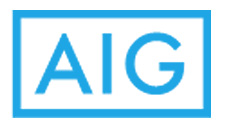In news releases late Monday afternoon, the New York company said current Chief Executive Brian Duperreault will hand over his title on March 1 to Peter Zaffino, the company’s president.
The hiving off of the life-and-retirement operations would be the latest dramatic change at a company that in the early 2000s was a financial-services behemoth with globe-straddling operations, including airplane leasing, a financial-derivatives business, and prosperous life-insurance units in far-flung locations.
AIG collapsed into the U.S. government’s arms in 2008 during the financial crisis, and roughly halved itself over the next four years as it raised money to fully repay taxpayers for a bailout that reached nearly $185 billion at its peak.
Over the past three years, Mr. Zaffino, 53 years old, has been a key lieutenant to Mr. Duperreault, 73, and he has been widely viewed as heir apparent inside and outside the company. The two have worked on a turnaround of the property-casualty unit. That unit is a leading seller of insurance to businesses world-wide but had delivered poor results for years.
Mr. Duperreault said in one of the releases that AIG is now positioned to pursue a separation in which both parts of AIG could “prosper as stand-alone entities.” Mr. Zaffino said a separation “will enable each entity to achieve a more appropriate and sustainable valuation.”
The breakup is a reversal of AIG’s position back in 2015 and 2016, when shareholder activists Carl Icahn and John Paulson lobbied for a split as a way to boost shareholder returns.
At the time, AIG maintained there were benefits to being a diversified conglomerate. Its property-casualty unit was struggling with underwriting losses and a talent drain stemming partly from its years as a government ward. There were concerns about how well the business would do as an independent company. The life-insurance unit provided stability to AIG’s results.
Now, Messrs. Duperreault and Zaffino, who both joined AIG in the wake of the shareholder activism, are credited by Wall Street analysts with successfully fixing most of the property-casualty unit’s problems and giving it strong growth possibilities.
This time, it is AIG’s life-insurance business facing a tougher outlook due to a plunge in U.S. Treasury yields earlier this year, following a decade of already low rates, as Covid-19 spread world-wide.
Low interest rates hurt life insurers in part because they depend on interest income on big bond portfolios for a substantial portion of their profits. Many industry executives expect rates to stay at ultralow levels and continue posing challenges to life insurers for years.
n recent months, AIG’s shares have underperformed many of its property-casualty-specific peers, even as its property-casualty results improved, as many investors don’t want exposure to life insurers because of their tough outlook.
AIG shares are down 39.1 % in the year to date, compared with 9.5% for the S&P Property & Casualty Insurance Index. The steep drop is more in line with the S&P Life & Health Insurance Index, which is down 27.7%. AIG’s market capitalization has shrunk to about $26.9 billion.
AIG said that “no decisions have been made as to how to achieve a full separation.” The board aims “to accomplish it in a way that maximizes shareholder value and establishes two independent, market-leading companies.”
In 2019, the life-and-retirement business represented about one-third of AIG’s adjusted revenue and 63% of its adjusted pretax income, as the property-casualty unit was battling to deliver better results. The life-and-retirement business represented about half of AIG’s total assets of $569 billion at June 30.
The releases don’t elaborate on potential paths for the separation. One option could be an initial public stock offering. French insurance conglomerate AXA SA, a rival to AIG, went this route in 2018 with an IPO of its large U.S.life-insurance business, which now trades as Equitable Holdings Inc.
Or AIG might sell a sliver of the unit to another company or entity, ultimately disposing of the entire business.
AIG is expected to proceed slowly in the separation as a way to use up remaining valuable deferred-tax assets that were generated as a result of the huge losses it suffered during the financial crisis. Those tax assets tallied $17.1 billion at year-end 2015 and were down to $8.99 billion at year-end 2019. AIG’s crisis-era woes stemmed from sales of risky financial derivatives.
Mr. Duperreault will become executive chairman of AIG’s board. The current independent chairman, former airline executive Douglas M. Steenland, will switch to become lead independent director. Mr. Zaffino is immediately becoming an AIG director.
Mr. Zaffino was a senior executive at Marsh & McLennan Cos. before joining AIG, and had worked with Mr. Duperreault when Mr. Duperreault was CEO there between 2008 and 2012. Mr. Duperreault joined AIG in May 2017 as CEO, and Mr. Zaffino was one of his first hires.
Mr. Duperreault had been mum about a possible retirement date, even as analysts have speculated that his tenure would only last a few years.
In another release Monday, AIG said that its catastrophe losses for the third quarter totaled $790 million, before taxes, of which $185 million would go to claims related to Covid-19, “principally in its travel, event cancellation, trade credit, property, agriculture and casualty books of business.” The remainder reflects wind and tropical storms in the Americas and Japan, and wildfires on the West coast.
Mr. Duperreault said the various events, including Covid-19, “had a limited impact on AIG” due to “underwriting discipline, reinsurance programs, revamped risk appetite and the strength of our balance sheet.”













